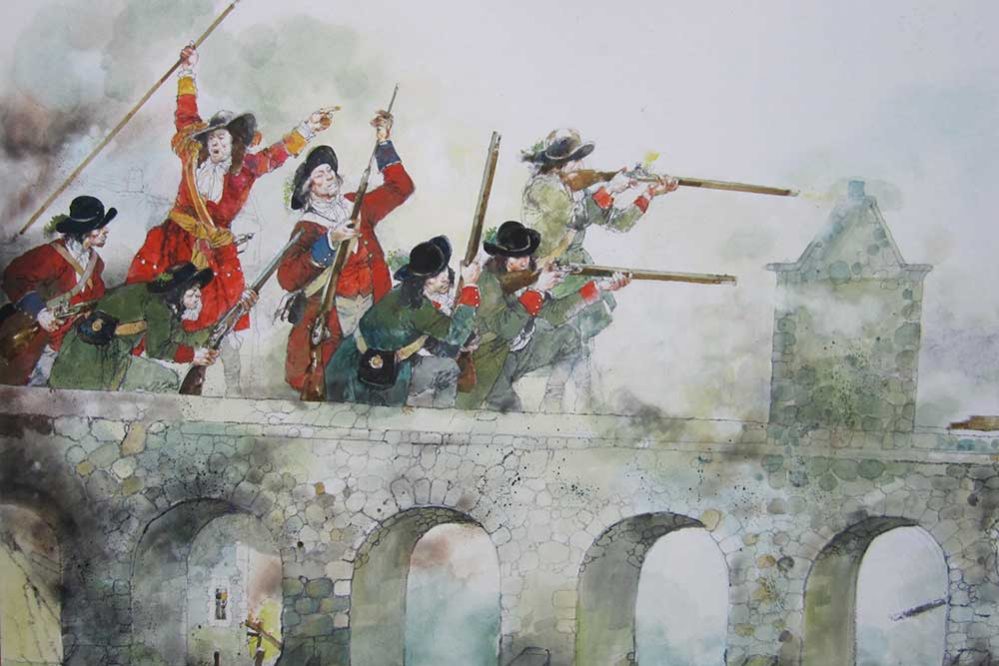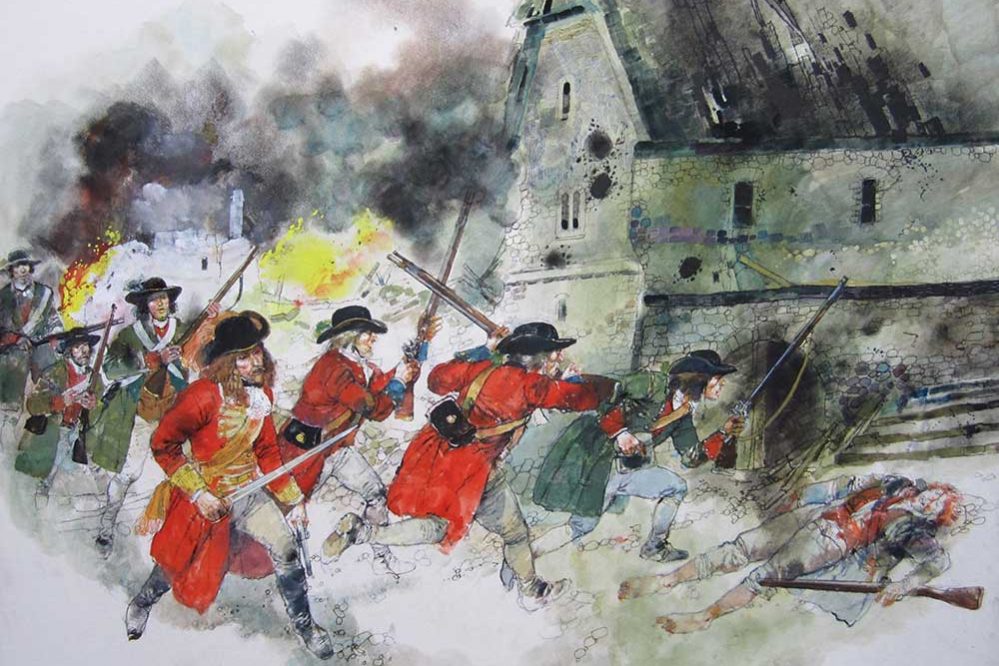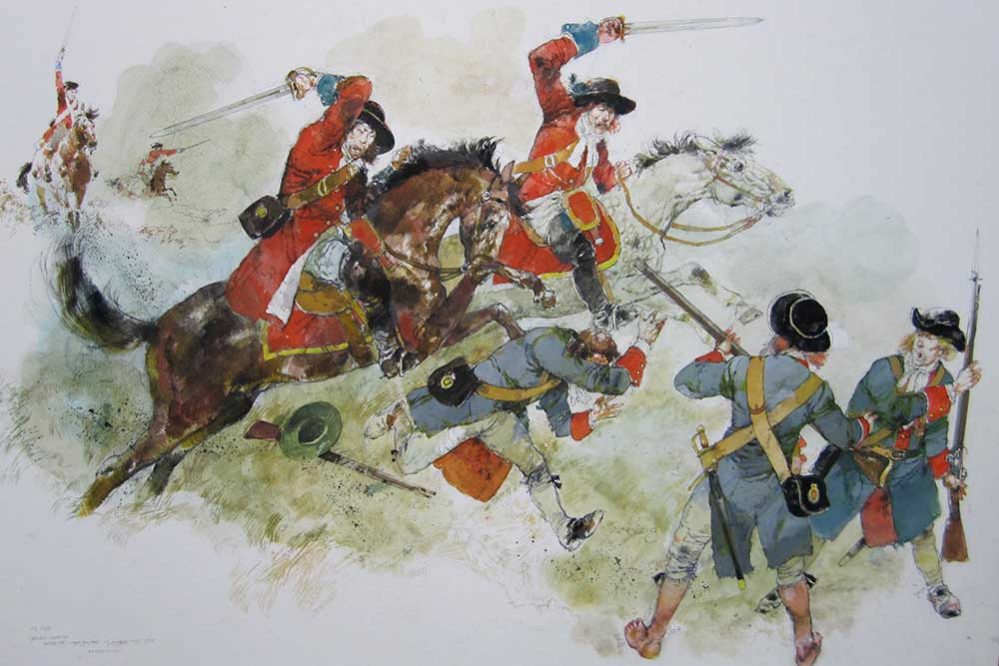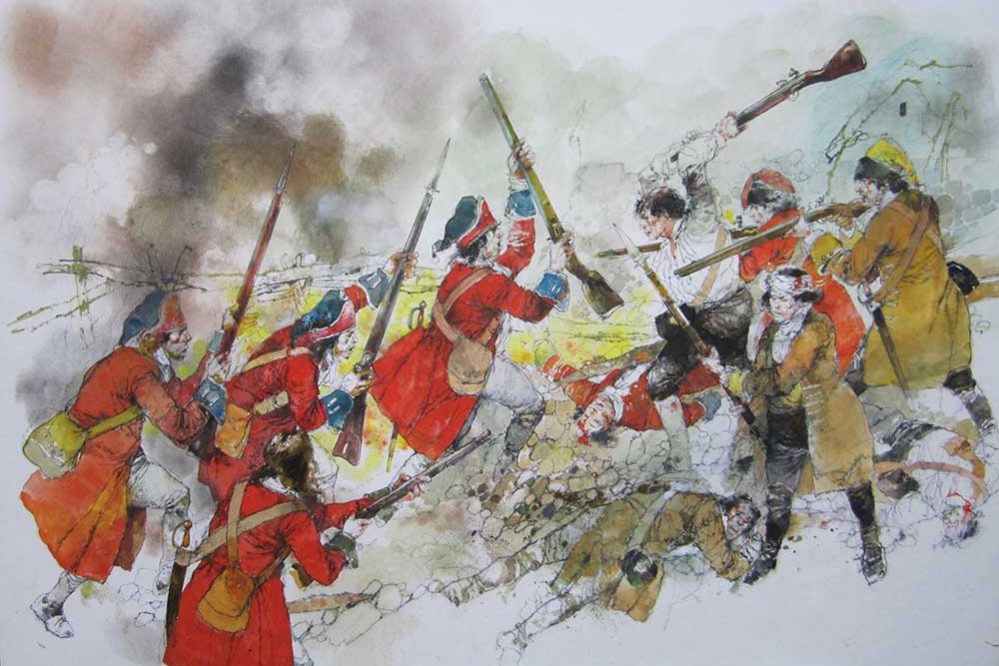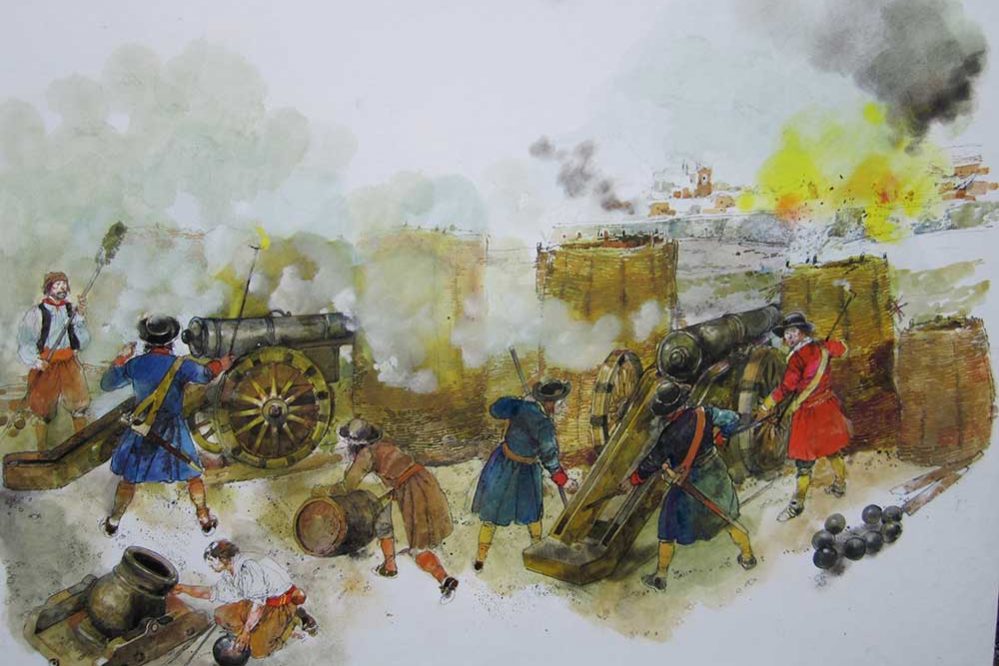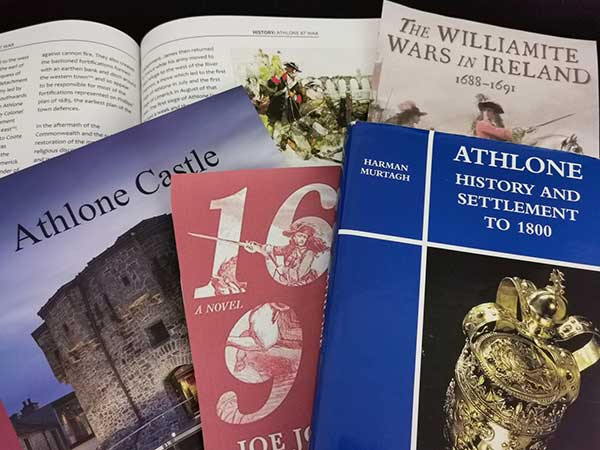The Siege of Athlone
The first Siege of Athlone, 1690
Between 1689 and 1691, Ireland was a significant battleground in a major European conflict. Prior to this, in 1688, the unpopular English King, James II, was overthrown by his Dutch son-in-law, William of Orange, in what became known as the “Glorious Revolution”.
In 1690 and 1691, the armed forces of both men would come face to face on the battlefields of Ireland. This was one of the most destructive periods in Irish military history.
William of Orange had, by this time, proclaimed himself King and his supporters called themselves the ‘Williamites’. Having lost control of his kingdoms, James II would look to France for military help. A multi-national army was organised, and James’ military supporters soon became known as the ‘Jacobites’. Both men’s strong forces clashed on Irish soil for the first time at the Battle of the Boyne on July 1st, 1690. Following a decisive win over James for the Williamites, James’ army moved west and would hold the line at Athlone. This was a Jacobite stronghold on an important river crossing.
However, William was spurned at his first attempt to besiege the town, his initial attack quelled by the might of the Jacobite army and the Governor of Athlone, Colonel Richard Grace. Forced to retreat, King William’s forces under the command of Lieutenant-General James Douglas planned a much greater assault on Athlone for the following summer.
In June 1691, the Great Siege of Athlone took place. General Godard Van Reede Van Ginkel was now in command of a strong Williamite force.
Did you Know Facts
Did you know…
In July 1690, Athlone was defended by only 2,000 men during the first siege.
Did you know…
The Marquis de Saint Ruth feared that the whole of Ireland would be lost if Athlone was to succumb to a siege.
Did you know…
12,000 cannonballs were fired by the Williamites over a period of 10 days. This works out at a shot being fired almost every two minutes.
Did you know…
A surprise final attack across the ancient ford by the Williamites caused the fall of Athlone Castle and its defenders.
The Great Siege of Athlone
In 10 days the Williamites fired off 12,000 cannonballs, 600 bombs and ‘a great many ton of stones shot out of our mortars’. It was the heaviest bombardment in Irish history.
In 1691 Athlone was the focus of the Williamite attack on Connacht, the Jacobite stronghold. Ginkel, the Williamite general, with a large force besieged Athlone in June. The east town was lightly defended and easily overrun. The Jacobites broke down the bridge and defied Ginkel from the west town. The Jacobite army, under General St Ruth, supported the defence. Ginkel deployed almost forty cannon and mortars in a continual bombardment, firing off 12,000 cannon balls that reduced the west town to rubble. An attempt to repair the bridge was thwarted by the bravery of the defenders.
Illustrations Credit: Victor Ambrus
After ten days, the Williamites made a final effort with a well-organised, surprise attack launched across the old ford. The Jacobite defenders, taken unawares, offered only feeble resistance, and were soon overwhelmed. Ginkel’s men quickly mounted the west town fortifications, which the Jacobites had neglected to demolish. No Jacobite counterattack was possible. Athlone had fallen, and St Ruth withdrew west with his army.
Athlone was the scene of a veritable bloodbath as up to 500 Jacobites fell during the final Williamite assault. Over the ten-day bombardment of Athlone and its stronghold, 1,500 men lost their lives in battle. Following the Williamite victory at Athlone, they would go on claim victory in one of the bloodiest battles in Irish history at Aughrim in Co. Galway. Following the Siege of Limerick weeks later, a truce was finally declared and the Treaty of Limerick signed in October 1691 ended the war in Ireland.



